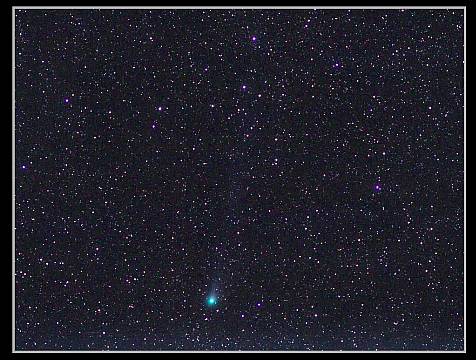A comet that passes by Earth once every 71 years is currently visible in the night sky using binoculars or small telescopes.
Astronomers say 12P/Pons-Brooks is growing brighter and there is a possibility sky gazers will be able to see it with the naked eye in the coming weeks.
It has already had several outbursts of activity, raising its brightness periodically, according to Dr Megan Argo, an astrophysicist at the University of Central Lancashire.
She added: “If we’re lucky, it may have another in the next few weeks as it passes through the sky.”
Comets are celestial objects mainly made up of dust, rock and ice.
Dr Argo said: “You can think of them as a bit like giant dirty snowballs.”
12P/Pons-Brooks, named after its discoverers Jean-Louis Pons and William Robert Brooks, spends most of its time in the outer reaches of the Solar System, where it is very cold.
It comes back to the inner Solar System every 71 years and is, hence, known as a periodic comet.

Dr Argo said that as the comet gets close to the Sun, the heat causes the ice to melt straight to gas – through a process called sublimation – and some of the material is lost from the surface.
She said: “This gas forms both a cloud around the solid nucleus of the comet – known as the coma – and a tail of material that can stretch many millions of miles in space.
“The tail is made of gas and dust that has been pushed away from the comet by the power of the solar wind streaming from the Sun, and this tail is the bit that can become spectacular in the sky as seen from Earth.”
Dr Argo said that while 12P/Pons-Brooks is developing a nice tail, it is “not quite visible without binoculars or a telescope just yet”.
For those looking to spot the comet, it is below – and slightly to the left – of the Andromeda galaxy.







